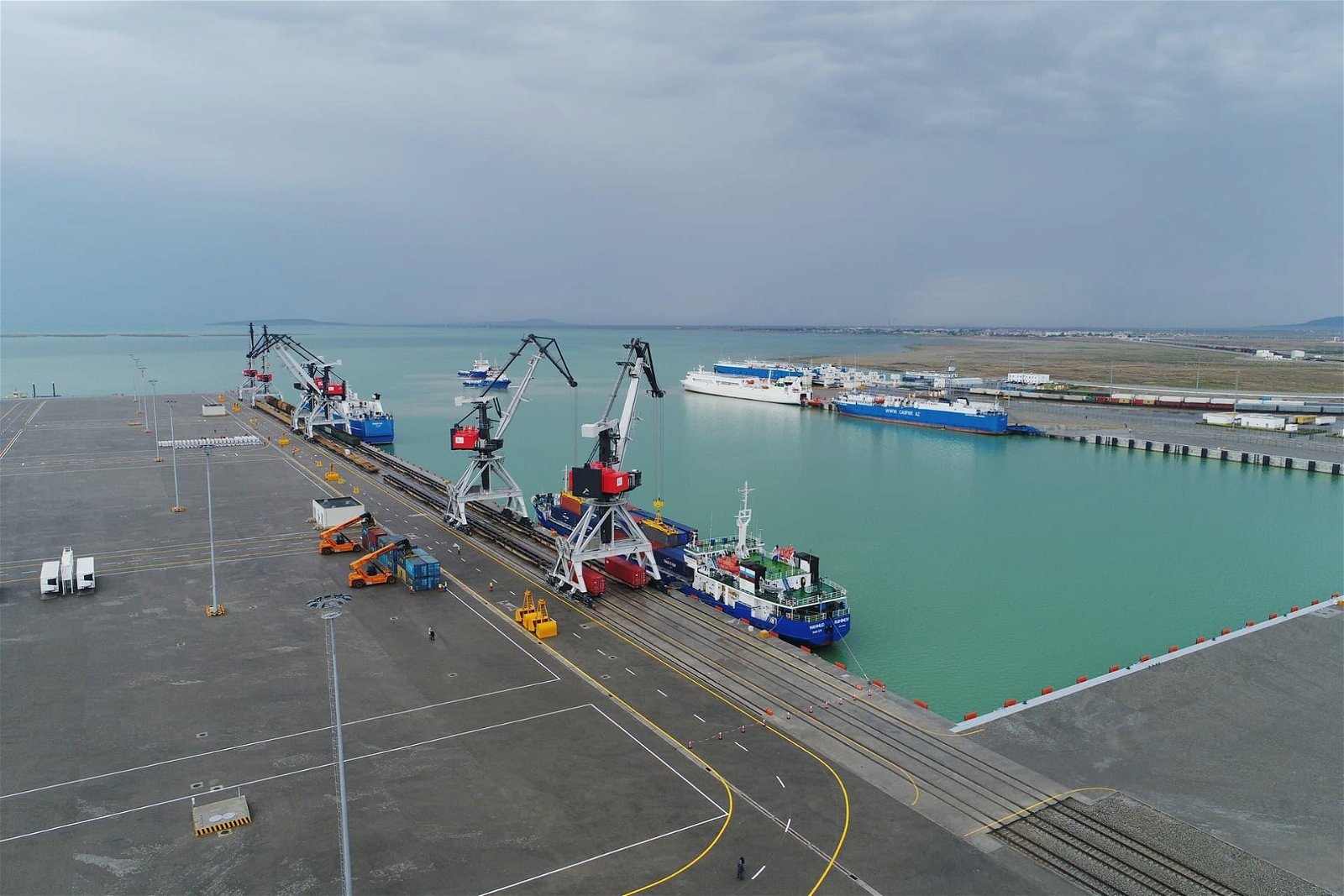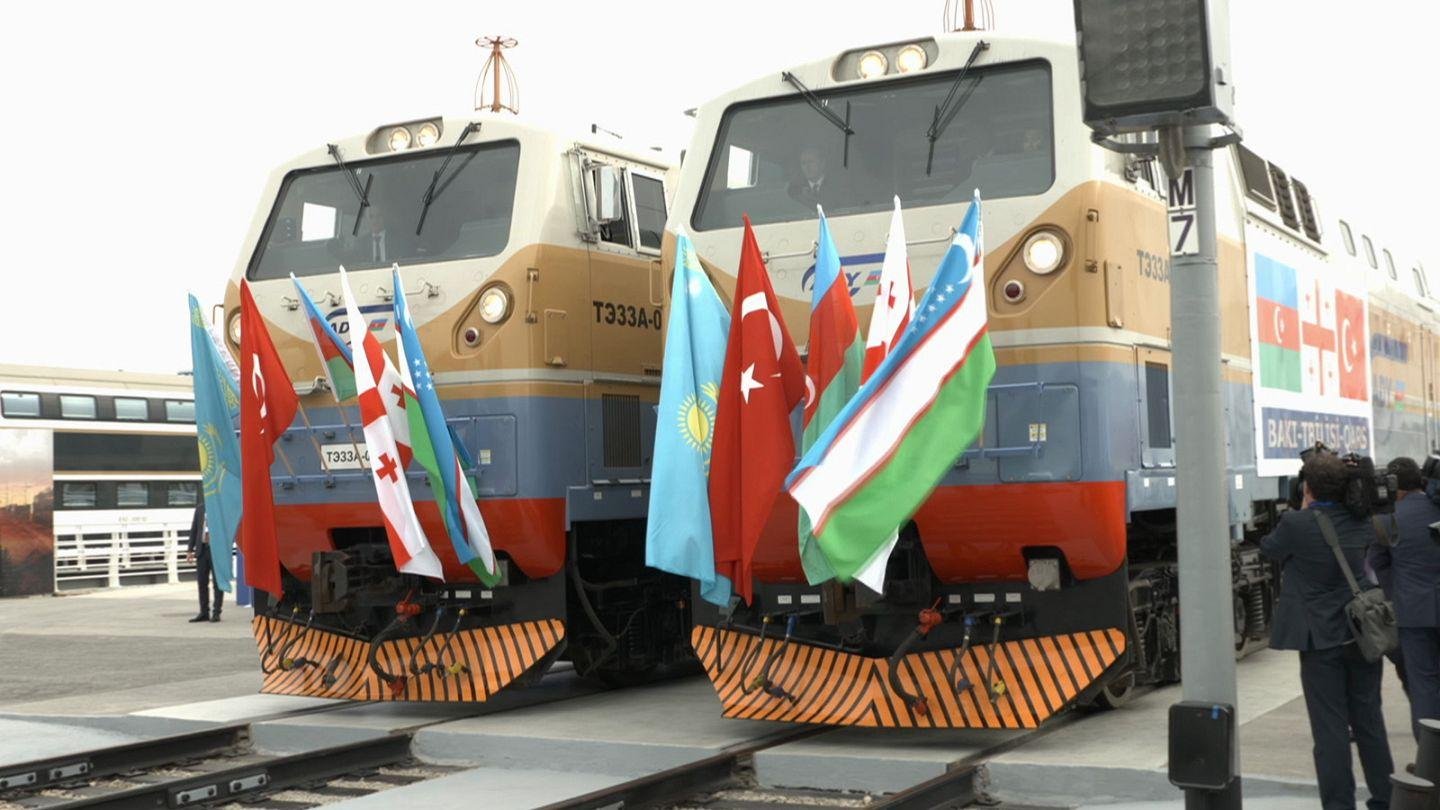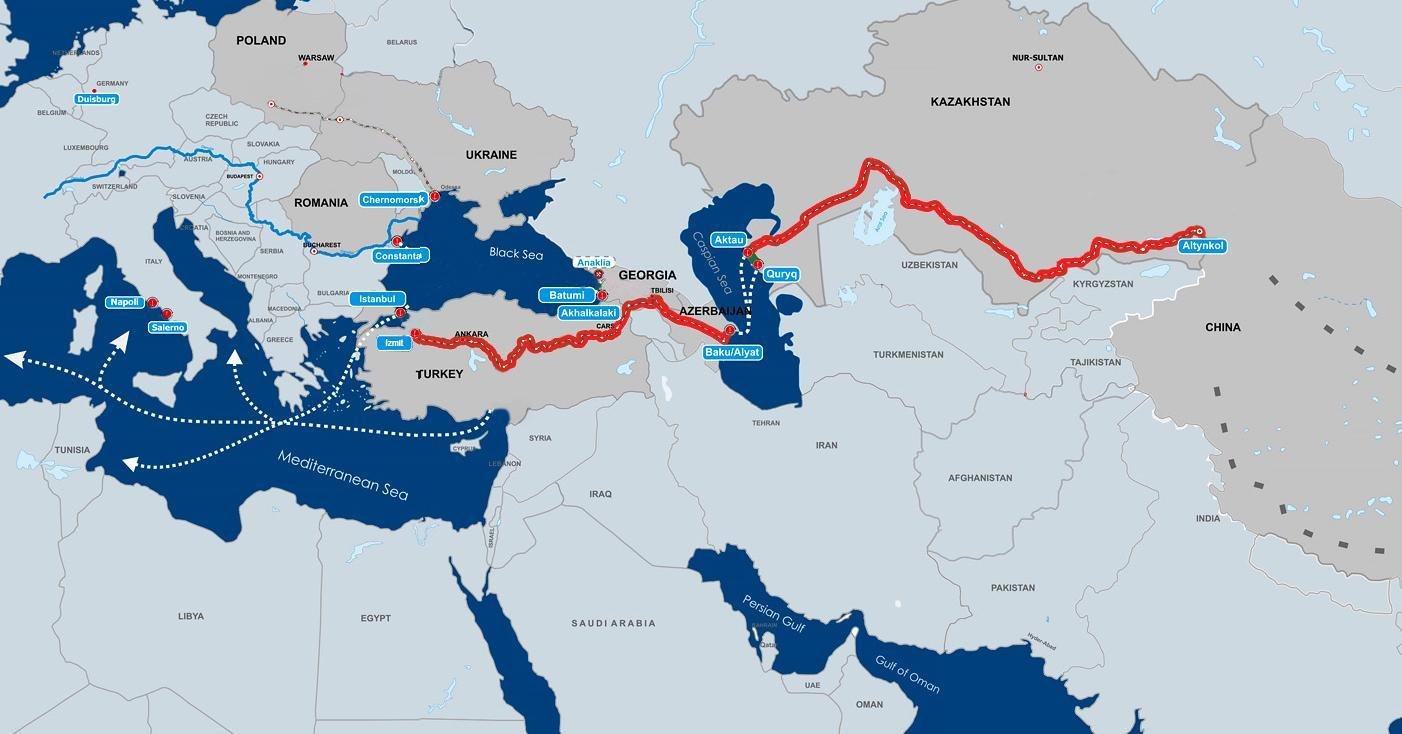Maersk announces new transport solution via Azerbaijan Baku's increasing role in transcontinental connections
Danish shipping and logistics giant Maersk has recently announced a new transport solution to facilitate cargo deliveries on a greater route spanning the United States, the Mediterranean, Europe, Central Asia, and Far East.
The company's new end-to-end intermodal ship and rail transport solution aims to enhance the efficiency of cargo transportation particularly for consumer, lifestyle, and tech products to the growing consumer markets in Central Asia with the main focus on Kazakhstan and Uzbekistan. It will also act as a basis for further logistics offerings in Turkmenistan, Tajikistan, and Kyrgyzstan.
“Besides our existing rail connection through China, there has been a rising demand among our customers in the Western hemisphere for a logistics solution in this corridor which is seamlessly connected to a global network at the European end. We are happy to serve this demand with our new dedicated offering now and help our customers to reliably import and export their products to and from the Central Asian markets,” said Sedef Ayhan, Managing Director East Mediterranean Area of Maersk.
Maersk marked the Georgian port of Poti as the main connecting gateway to its global ocean network. After Poti, the key hub is Azerbaijan’s capital Baku, which is home to the largest trade port and maritime fleet on the Caspian Sea shores.
After reaching Baku from Poti on rail, the freight will traverse the Caspian Sea toward the Aktau port of Kazakhstan, from where it will head to the ultimate destinations in Central Asia, such as Almaty, Astana, Tashkent via an efficient train network.
According to Maersk, this strategic approach enables efficient and secure delivery to the final destinations, minimizing delays and enhancing customer satisfaction.
To further bolster the end-to-end connection, Maersk deploys a control tower team to oversee and manage the entire operations process. The team is tasked to ensure a streamlined and coordinated approach to handling cargo, providing real-time updates, and addressing any potential issues that may arise along the journey.
Multi-modal transport grid of Azerbaijan
Azerbaijan offers a sophisticated transport network to leverage intercontinental connections on the east-west and north-south routes. The country is located at the crossroads of Europe and Asia on the western shores of the Caspian Sea. Over the years, the Azerbaijani government applies local and international expertise to create one of the region’s versatile multi-modal transport grid.
The Baku International Sea Trade Port, known also as the Port of Baku, is considered one of the region’s most advanced hubs of its kind with a cutting-edge technical and technological environment, and all-inclusive infrastructure opportunities for logistics companies and port users. The largest maritime port in the Caspian Sea has a throughput capacity of up to 15 million tonnes of cargo, including 100,000 twenty-equivalent units (TEU).

Amid the growing demand for routes passing through Azerbaijan, the Baku International Sea Trade Port is currently working to implement a number of projects to increase the transshipment of all types of cargo.
President Ilham Aliyev has recently said the port’s cargo handling capacity is being increased to 25 million tonnes. As part of the work to expand the throughput of the Baku Port, its authorities also plan to put into operation a TIR park, as well as build terminals for transshipment of bulk cargo and mineral fertilizers.
The authorities of the Baku Port signed in 2022 a cooperation agreement with Albayrak Group, the leading Turkish construction, industry, and media group of companies. The document provides for joint activities at the “Ro-Ro” and fertilizer terminals in the port complex, creating the most comfortable and stable conditions for freight carriers in the logistics and supply chain, and ensuring more transit through Azerbaijan.
In addition to maritime capacity, Azerbaijan also offers one of the region’s most reliable railway connection. The Baku-Tbilisi-Kars (BTK) railway stands as the backbone of the country’s national railroad grid. The 829-kilometer-long BTK line links Azerbaijan’s railway network to the railroad grid of Türkiye and enables an easier and faster rail connection between China, Central Asia, and Europe.
Starting from Baku, trains on the BTK rails cut through Georgia’s capital Tbilisi towards the final destination of Kars in northeast Türkiye. A 504-kilometer portion of BTK passes through Azerbaijan, while Georgia and Türkiye have 246-kilometer and 79-kilometer sections, respectively.

The government of Azerbaijan is currently taking necessary measures to expand cargo volume via the BTK road from 1 to 5 million tonnes per annum. At its full swing, the rail line is expected to transport 17 million tonnes of freight per year. Since its launch in 2017 to early 2023, the BTK carried a total of 1.5 million tonnes of cargo, according to Azerbaijan Railways Company (ADY).
Middle Corridor
Both the Baku International Sea Trade Port and the BTK railroad form a vital part of the 5,000-kilometre-long Trans-Caspian International Transport Route (TITR), known also as the Middle Corridor. The intercontinental route runs from the Chinese Lianyungang seaport to the Chinese-Kazakh border, further through Kazakhstan, the Caspian Sea, Azerbaijan, and Georgia to Ukraine and Poland.
Goods are transported by railway to the Kazakh seaports of Aktau and Kuryk and further sent to the Port of Baku in Azerbaijan by ships via the Caspian Sea. In Azerbaijan, containers are transported along the Baku-Tbilisi-Kars railway.

The route further splits up into two with both leading to Europe — one of them passes through the Turkish cities of Mersin and Istanbul and the Mediterranean Sea, while the other one stretches to the Ukrainian city of Chernomorsk via the Black Sea.
Currently, 3 to 5 percent of overland cargo from China to Europe passes through the Middle Corridor. The authorities of Azerbaijan, Türkiye, and the Central Asian countries aim to increase it to around 30 percent in the coming years.








